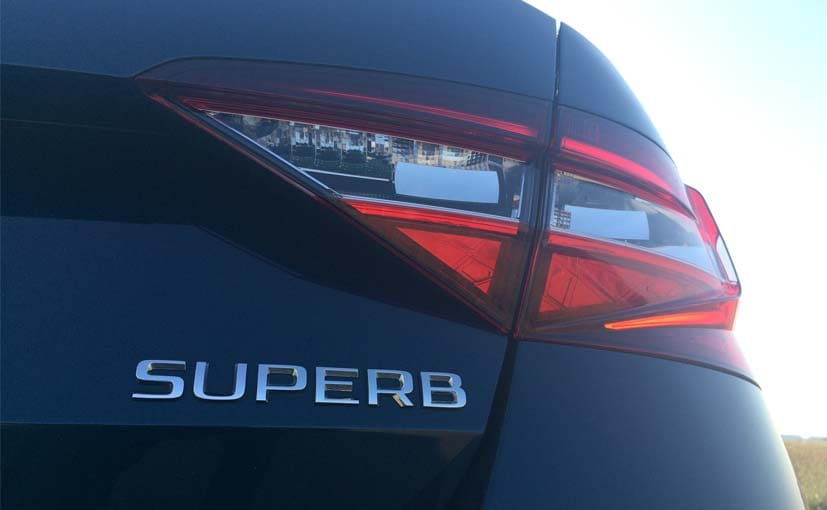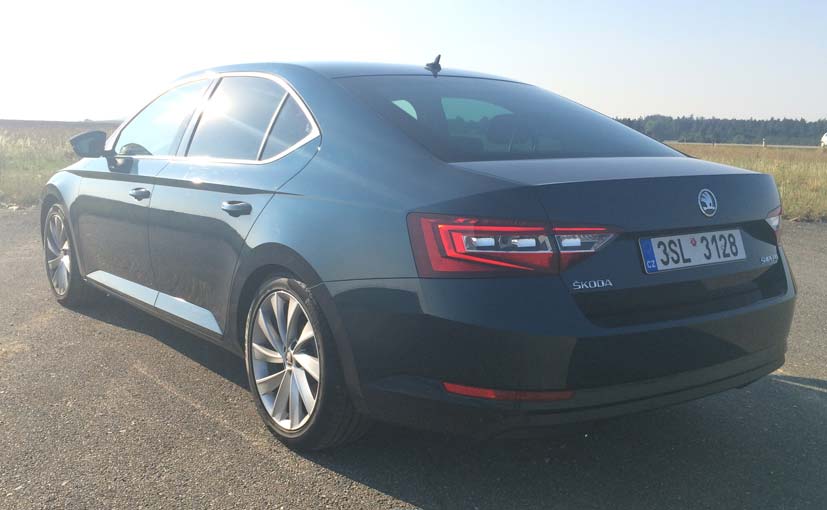
It was easily one of the most significant cars to drive into the Indian market when the 2nd generation arrived in 2009. Even the 1st gen before it had established what I call E-Class comfort at C-Class prices, but the 2nd generation truly cemented that reputation, and was a big hit for the Czech carmaker. The Skoda Superb established itself as the right blend of comfort, luxury, performance, and value – since it seemed to offer more options on powertrain and trim – and also an attractively priced variant mix across diesel and petrol engines.
At the time, the fullsize sedan segment was still fairly active, and the Superb certainly ruffled the feathers of the bestsellers, namely the Honda Accord and Toyota Camry. It also boasted innovations like the twin boot and had oodles of rear cabin room.
The new 3rd generation car is now on-sale in India, and once again Skoda has prepared a formidable package on the car. This is Skoda’s second MQB (VW Group’s modular platform) car for India after the Octavia came in two years ago. The Superb made its global debut at a high decibel unveil in Prague in February 2015, and was then subsequently introduced to the European market last summer. At the time I remember thinking the car is going to do well, and it did. The Superb was instantly deemed a hit for Skoda because of its modern engineering, connectivity and convenience features, and edgy design. I had the chance to experience the Superb on a detailed drive when I drove it from Prague to Bratislava, and on to Budapest – and back! Spending 3 days and driving over 1000Km – I can tell you one thing right away – despite the cloud that hangs over the VW Group and its various car brands, this is a very well engineered product, and deserves our attention.

The all-new Skoda Superb is ample, roomy, well appointed, athletic, and very well built. The car is also very no-nonsense, having done away with the gimmicks like twin boot (which I think was less a gimmick and more practical than its buyers eventually made it out to be!) and seems to focus on precision. In terms of looks, the new Superb derives heavily from Josef Kaban’s Vision C concept that used sharp angular lines, and a play of glass and light – which is inspired by Bohemian crystal that the Czech nation is known for. The use of angular surfaces and sharp cuts in the metal is complemented by the very sexy and three dimensional headlamp cluster, which uses light and varying surfaces to create a rather unique effect. The Superb looks very much the evolution of Skoda’s design and indeed more futuristic looking than the last car was. But despite the modern edge, and superior build, it cannot be called pretty. It is more the basic black Hugo Boss business suit, and isn’t trying to be a flamboyant Armani or younger Kenneth Cole. But as the senior executive’s chauffeur driven ride that could work just fine – in the Indian context anyway. But otherwise the Superb (like its cousin, the Volkswagen Passat) can very well be an efficient and practical family car too. In India those families would rather spend this kind of money on an SUV or entry premium car, sadly!
The car offers a range of drivetrains in Europe, and I tested the 147bhp, 2.0-litre common rail diesel, which has arrived in India in its 175bhp state of tune. Either ways, it really is the pick of the pack for me. While the smarter and smaller petrol options like the 1.4 TSI are also attractive (on price and performance), in India it’s always the bigger engines that the consumer expects. Although a very attractively priced small-engine variant would instantly get Skoda the kind of attention the last generation had – for similar reasons of great value, Skoda has focused on luxury and has chosen to bring only the higher performance variants of the all-new Superb to India.
The 2.0 is a gem – quick acceleration, no hint of lag, and very sharp response. It is in fact a much sharper performance overall as compared to the last Superb. Handling is great, and you don’t for once get a sense of the massive bulk of the car’s actual size. It is all nice an taut, and I did enjoy the manual gear box immensely.

The car handles superbly (oh you noticed the pun this time, did you? How clever of me, eh?) and the steering is extremely precise too – which helps the handling. I had a high-speed, high-tension moment when the cars in front of me suddenly braked – and we were all going at about 130Km/h. The Superb never lost its composure, as I slammed the brakes and did the emergency lane-switch maneuver. It held its line, and never wavered even once. Honestly, I expected nothing less, and would have been disappointed if it had not. Ride quality is stiff yet comfortable and would satisfy the choosy backseat owner in India – though I admit I never sat at the back while the car was in motion, as I was alone! The seats are also well defined and contoured, and there is good lower back and under-thigh support, especially up front.
The Superb is still a very roomy car, but the dark cabin on the car I was driving gave off a nice compact sense to it. I mean that in a good way – and while Indian buyers loved the extra extra legroom on the previous car – this one won’t disappoint despite appearances. It was also the longest I have used Apple CarPlay, as in the Czech Republic specification car the option was very much there. The Superb is the second car to bring this to the Indian market (after the Maruti Suzuki Baleno) and it does integrate quite well with the car’s infotainment functions and systems – though takes some getting used to.
I was rather smitten with the Lava Blue exterior paint colour on the car I had. In Europe, the Superb is offered in 14 colours, which includes the very popular Rosso Brunello from the last car. Unfortunately though, only 4 colour options have made it to India.

Now the main thing to consider here is the feasibility of introducing a product in a segment which has started to dry up. In my opinion, the Skoda Superb should do just fine as the car still offers great value, despite no longer being able to offer the sub-20 lakh price the last one did at launch. You get so much equipment here – Apple CarPlay, all sorts of driver aids, and safety features – it is all fantastic. The value kicks in when you compare it to the entry premium segment cars like the Audi A3 or Mercedes-Benz CLA too.
The all-new Skoda Superb has arrived in India with 2 engine options – a 177.5bhp, 1.8-litre petrol mill offered with either a 6-speed manual or a 7-speed DSG autobox, and a 175bhp, 2.0-litre diesel unit that comes with a 6-speed DSG autobox as standard. Trim levels include a base variant called ‘Style’ and a top-spec ‘L & K’ variant which comes fitted with a host of additional bells and whistles, including a MaxiDOT Multi Function Display, Drive Mode Selector, 610 W Canton 12-speaker Sound System, Driver Fatigue Detection System, Tyre Pressure Monitoring (TPM), and air conditioned seats, among many others. While the base-level petrol manual variant comes in at 22.68 lakh, the top end L & K-spec diesel automatic variant costs 29.36 lakh (all prices are ex-showroom, Mumbai).
I really do hope that the car is well received by the Indian consumers. No, not because I am suddenly batting for the Superb (even though Skoda and its parent can use all the help they can get right now really!) but because I feel for this segment. The fullsize sedan has disappeared into irrelevance. And as a result we have missed out on some good global products. Nevertheless, the new generation Passat, which was showcased at Auto Expo 2016, is expected to follow the Superb as is the 9th generation Honda Accord. The lackluster performance of the segment hasn’t given enough reason for other companies like GM, Hyundai, and Nissan to bring us their latest flagship sedans like the Malibu, next gen Sonata or Altima, respectively – all bestsellers in multiple markets. But if the excitement (and buyers) returns to this segment, it wont take long to get those and more nameplates in – including their hybrid/electric avatars. Here’s hoping then!
[“source-auto.ndtv”]





